A special edition from Brazilian Orchids
The Re-Opening of the Nursery and the Green House
of the Botanical Garden of Rio de Janeiro
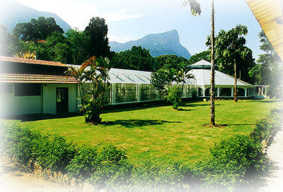
The Orchid Program
Interview with Marta Leitman
Orchid Show

ORCHID PROGRAM
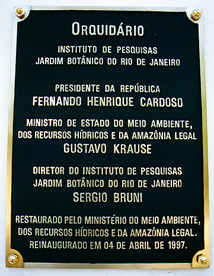 Recognizing the urgent needs to scientific data about the fascinating diversified flora of Brazilian orchids, the Botanical Garden of Rio de Janeiro decided to create the Orchid Program in order to make studies about reproduction, biology e diversity of the Orchidaceae family, this program will be coordinated by Antonio Toscano Brito, Ph.D. in orchids systematic, post-graduated from Reading University, Royal Botanic Garden, Kew, England, supervised by the biologist Marta Leitman, graduated from Rio de Janeiro University and coordinated by the landscape gardener Esther Bonder.
Recognizing the urgent needs to scientific data about the fascinating diversified flora of Brazilian orchids, the Botanical Garden of Rio de Janeiro decided to create the Orchid Program in order to make studies about reproduction, biology e diversity of the Orchidaceae family, this program will be coordinated by Antonio Toscano Brito, Ph.D. in orchids systematic, post-graduated from Reading University, Royal Botanic Garden, Kew, England, supervised by the biologist Marta Leitman, graduated from Rio de Janeiro University and coordinated by the landscape gardener Esther Bonder.
Purposes: The main purposes of the Orchid Program are distributed into 2 stages which are chronological dependent:
Stage 1: September 96 - September 98
I - Restoration and Extension of the physical structure of the Orchids Garden of Botanical Garden of Rio de Janeiro
Considered as the most interesting part by the almost 500.000 people who visit every year the Botanical Garden, the Orchids Garden is divided into a centenary glass green-house 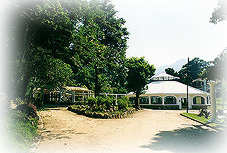 and a annex nursery besides the outdoor areas.
and a annex nursery besides the outdoor areas.
After showing a glorious period during the first half of this century, nowadays, it needs a completely restoration of the glass green-house, reparation of the nursery besides the laying out of grounds and gardens around the Orchids Garden.
To start the Orchid Program, the Federal Government, by the Ministry of Environment, Natural Resources and Legal Amazon - takes parts with an important financial contribution to restorer the Orchids Garden principally the imposing glass green-house.
II - Restoration and identification of the orchids collection of Botanical Garden of Rio de Janeiro.
As a part of the campaign "Adopt the Botanical Garden and get into the history", the Botanical Garden has been recently adopted by the jeweler Antonio Bernardo who, by a considerable financial contribution, will be responsible for the restoration and maintenance of the orchids collection, as well for the gardeners, technical supervisor and scientific coordinator's salaries.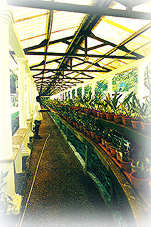
III - Enrichment of the orchids collection of the Botanical Garden of Rio de Janeiro.
The main purpose of this stage is the construction of the National Orchids Collection to be installed in the Botanical Garden of Rio de Janeiro.
By the interchanging with scientific institutions, collector donations and mainly by the scientific expeditions to the various Brazilian ecosystems, the Collection will be continuously enriched by new specimens and will attend as a alive laboratory to all interested in scientific study of the orchids or to people who just desire admiring them. It will also shelter producer plants of seeds in order to reproducing the natives species which are threatened by extinction or have high scientific or ornamental values.
Stage 2: (beginning October 99)
This second stage of the program, which will be settle by resources from Botanical Garden, institutions of promotion and partnership with the private enterprises, has as principal purposes:
I - Reproduction of natives species by seeding, principally the rare species or threatened by extinction or which have high ornamental values in order to re-introduction them to their natural habitats and furnish seeds to growers.
II - Development of researches about the various scientific aspects of the orchids, mainly taxonomy, biology reproduction and horticultural aspects.
 Click here to see more photos from de
Click here to see more photos from de
Orchid Garden of the Botanical Garden of Rio de Janeiro.

Back to top

Interview with Marta Leitman
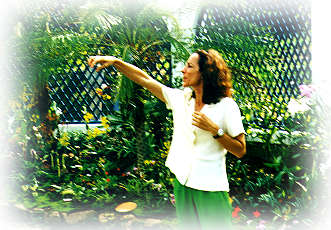
- Marta, I would like you to tell us a little about the Orchids Garden's history, the difficulties and the efforts you have been devoting to restore it.
- We don't know very much about the greenhouse's history, it is dated from the last century. We have some photographs which show us how it was like when the structure was in wood already with its shape octagonal, before to have been changed on glass and iron. The green house, in its golden period, had a very significant collection.
When we arrived here, at the beginning of 1995, the Orchid Garden was opened but very abandoned. Basically, it only had some polypodies which can stand the hotness and the humidity, the araceaes, anthuriums, philodrendruns, heliconias (from banana's family), it was all. There were a lot of too old orchids hanged on the trees trunks, the clumps too abandoned with insects houses. Really too abandoned and just one person to carry on every thing. It is very much difficult to maintain this place, it is big and associated to scientific studies and also associated to public visits, it needs a big number of people working all the time.
The program only has been possible because the Ministry paid the restoration and because Antonio Bernardo is responsible by two gardeners, mine, Toscano and Ester's salary. So I think that with the structure we have settled here, now, we can go on with the Orchids Garden.
We intend to enlarger the collection making it becomes significant, in special, in the Brazilian orchids universe. In respect to exotic plants, we will accept donations but we don't intend to gather a collection of them. The Botanical Garden is a place for studies and conservation. We want to have Brazilian plants and show it to the public. Now we will establish an expedition program to collect orchids in different habitats and bring them here.
- How do you deal with the commercial orchids gardens ?
- We have an interchange with Quinta do Lago Orchids which gives us all the instructions and gardeners training. They also have a laboratory which we don't have and won't have in early future because it is very expensive, something very specific and really a big investment of capital. We are just starting but we believe that this interchange will be profitable to us.
They will give us assistance in maintenance, cultivation and in germinating seeds which we will supply, we will change species collected, providing specimens and meanwhile they maintain flowering plants because it is important to the public to see many flowers. The most part of our plants aren't flowering yet so we don't have any thing to show. I think that the more interesting, still the plant is not flowering, is the variety of plants inside the orchids universe, since microscopic until enormous plants but the public desire seeing big flowers. In some way, Quinta do Lago will try to maintain a little show room for the public and we are doing the same of others commercial orchids gardens. There was this orchids show for the inauguration and we will try to do two or three during the year.
- Do you intend to collect and classify the plants?
Regarding to collecting plants in the habitats, we intend to have in the collection, plants which are representative of each ecosystem, even they aren't rare, even they are common and of course, we are searching for new species, not yet described because we know that there is a lot of thing to be described. We don't have many information about the totality of orchids we have at this moment. For the science, it is a very complicated thing.
For identify a plant, you need to be sure about de name you call it, it is very very important to know the origin even to understand if what you are seeing is a common plant or not, if is threatened by extinction. This occurrence relation is very very important and we don't have any information about the specimens we have here, we don't know who collected them, when, where.
That is what we intend to do, starting a basic and very well established work.
- What do the Orchids Garden have at this moment?
- We found here those plants, we removed them from the clump on the trees, put them into pots, the clumps which were still good, we hanged the trunks them selves, cutting the branches. Now we are doing phyto-sanitary treatment because there were different diseases and attacks. Quinta do Lago is also orienting us, every three months, we do the pulverization. Practically every thing is eradicated, we just must wait the renewing of the leaves because the imperfection or deformity are reminiscence of those attacks. We are feeding every week and now, basically, it need watering, attention, adequate light, more or little according to their needs, changing, re-organization.
- There will be a politic of interchange information?
- No doubt about it, we had an offer. Toscano did his doctorate in Kew and has been oriented by Philipp Crib, an renowned expert on orchids, who has already open the doors to us. He is sending publication because we really need bibliographies to identify what we have here.
An American expert, Carl L. has been here and brought a lot of flowers to describe and sends us plates, identification. The scientific interchange exists and has always existed. The Botanical Garden is renowned in the whole world because of the systematic works, so the interchange exists and will go on better.
- Do you intend to publish the works developed here?
- We intend to make this Orchids Garden in a center of scientific production like the Botanical Garden. We are just starting, we need to get some students to work here, essential equipment like a good magnifying glass, with a open camera to observe all flowers and draw them. We are stating with the basic work which consists in cataloguing what we have here. We collect, describe the characteristics and the color before put them in alcohol etc. We are doing the basic work but the purpose is to go on with the systematic works.
- How those projects will be supplied?
- Since it is a pioneer experience, the partnership with Antonio Bernard has been done for only 2 years but he wanted to do it for 5 years. The director thought it was more prudent to do shorter contract and verify the results. Besides the support to maintain the collection, we will look for another supporter for the expeditions which are expensive. We must go to Amazon, go to remote places with the staff and this involves transport, daily expenses, etc... We also must get financial support to research because we need some equipment, the CNPq (Research National Center) is supposed to give us, we have just to asking for some scholarships, equipment but all those things aren't very expensive, a PC, magnifying glass, with R$ 15.000, we can have every thing we need.
We don't have yet experience in making the Orchids Garden to get profits. Other places in the world doing this like the Orchids Garden of Singapore which is phenomenal with 5 floors, a giant construction, the ingress to Botanical Garden is free but in the Orchids Garden is paid. I don't know if they sell plants but I think so. It could be a possibility but every thing is very new.
The Botanical Garden of Rio de Janeiro has just got its autonomy from IBAMA. It became an institution since some months ago. Administrating earnings, looking for support, all those thing are novelty.
We are creeping in this way but I think the potential is great.

Back to top

Orchid Show
For this re-opening it was organized an orchid show with the commercial nurseries and growers from Rio de Janeiro.
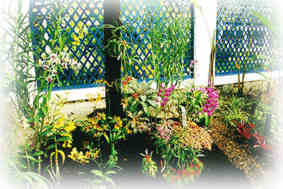 The following nurseries took part in this first Orchid Show:
The following nurseries took part in this first Orchid Show:
Quinta do Lago
Aranda
Miranda Orchids
Orchid Castle
Central de Orquídeas e Bromélias
Vale Feliz
Florália
OrquidaRio: which showed plants cultivated by the following members: Raimundo Mesquita, Carlos Gouveia, Raul Sudré e Maria Lúcia.
The Main Awards of this 1st Orchid Show:
Better Plant: Cattleya bicolor Minasgeraisense - Quinta do Lago
Best Cultivation: Dendrobium -Central de Orquídeas e Bromélias
Best Dendrobium: Dendrobium Classic Gem - Central de Orquídeas e Bromélias
Best Exhibitor: Central de Orquídeas e Bromélias
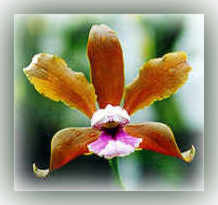 Best Oncidiinae: Beallara tropical - Raimundo Mesquita
Best Oncidiinae: Beallara tropical - Raimundo Mesquita
Best Vandaceous (semiterete) - Aranda
Best Vandeaceous (Coerulea): Vanda Gordon Dillon Lea -
Vale Feliz
Best Cattleya alba and semi alba: C. Empress Bells "Stephenson" - Aranda
Best Hybrid Cattleya purple : LC Floralia's - Orchid Castle
Best Paphiopedilum: Aranda
Click here to see photos of the show
Send us an e-mail with your comments or with suggestions for the next issues
Back to top
Back


 Recognizing the urgent needs to scientific data about the fascinating diversified flora of Brazilian orchids, the Botanical Garden of Rio de Janeiro decided to create the Orchid Program in order to make studies about reproduction, biology e diversity of the Orchidaceae family, this program will be coordinated by Antonio Toscano Brito, Ph.D. in orchids systematic, post-graduated from Reading University, Royal Botanic Garden, Kew, England, supervised by the biologist Marta Leitman, graduated from Rio de Janeiro University and coordinated by the landscape gardener Esther Bonder.
Recognizing the urgent needs to scientific data about the fascinating diversified flora of Brazilian orchids, the Botanical Garden of Rio de Janeiro decided to create the Orchid Program in order to make studies about reproduction, biology e diversity of the Orchidaceae family, this program will be coordinated by Antonio Toscano Brito, Ph.D. in orchids systematic, post-graduated from Reading University, Royal Botanic Garden, Kew, England, supervised by the biologist Marta Leitman, graduated from Rio de Janeiro University and coordinated by the landscape gardener Esther Bonder. and a annex nursery besides the outdoor areas.
and a annex nursery besides the outdoor areas. 

 The following nurseries took part in this first Orchid Show:
The following nurseries took part in this first Orchid Show:
 Best Oncidiinae: Beallara tropical - Raimundo Mesquita
Best Oncidiinae: Beallara tropical - Raimundo Mesquita